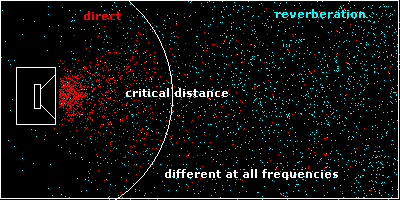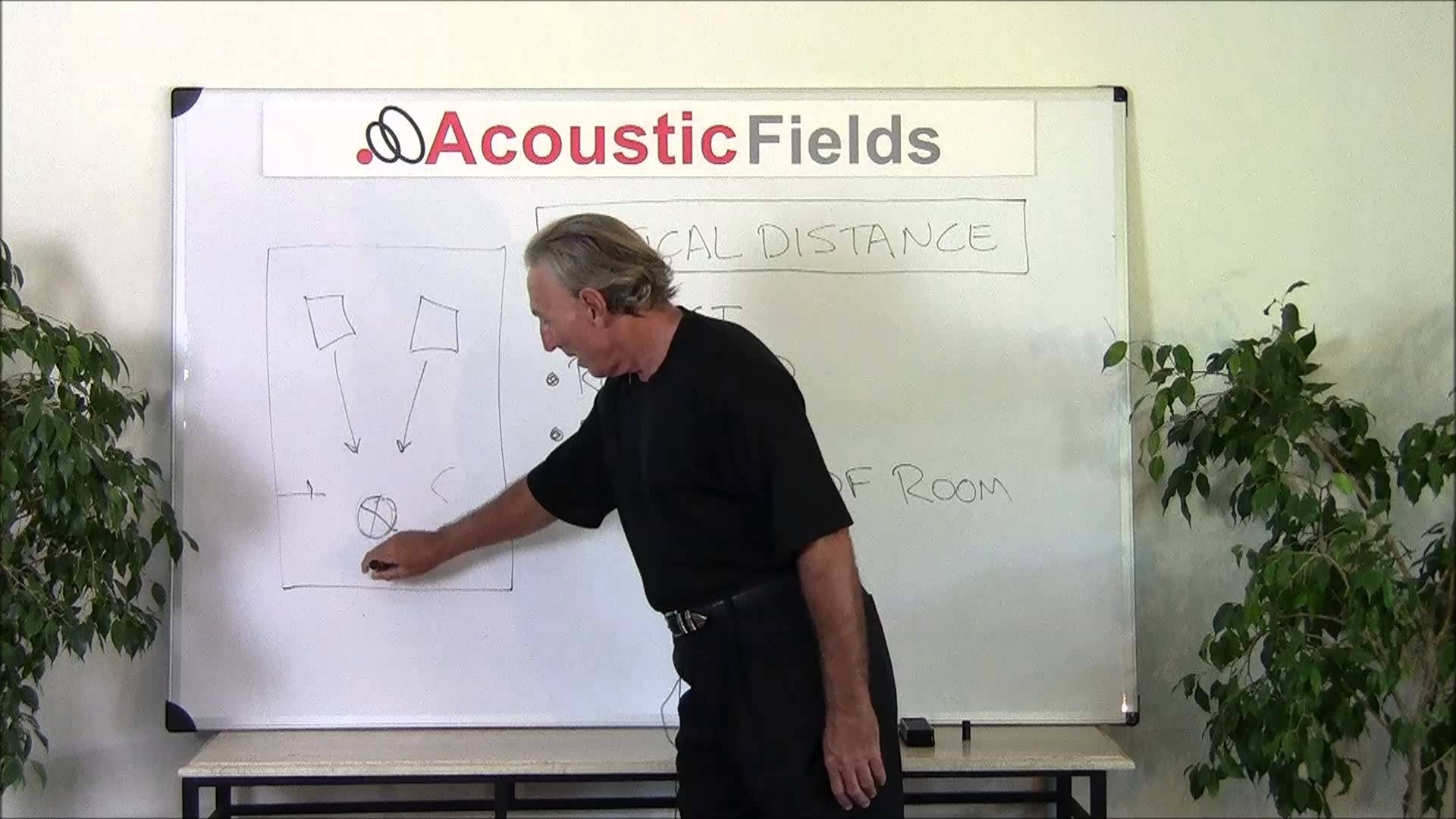Critical distance is particular about which place in your listening room, home theater, or professional recording studio it will live. It lives somewhere on the room’s center line, towards the back third of a rectangular room. Why is it called a critical distance? If it is that critical, do you need to be concerned about it in your listening or recording rooms? Absolutely! You don’t want anything getting in the way of your music so this is something that you need to figure out and work on. This blog updated on 12/10/19 to reflect changes in knowledge and treatment.
So in this video, I will show you how to understand the definition of the term, why it’s so important and how to locate it in your own room.
Critical Distance And Why It Matters
Critical distance is that physical place in your room where the room sound from your room is mixed with the direct sound from the speakers. The direct sound is that sound which travels in the shortest distance between two points which is a straight line. Reflections from the room walls and ceiling intermix with the direct sound from our speakers at a balance point where reflections and direct sound appear to have equal sound energy. This is the critical distance point in your room. It must be found because you need to know where it is. Maybe, you will sit and listen in that spot. Maybe you will monitor in that critical distance spot. You have to find it, but how?
Critical Distance : https://en.wikipedia.org/wiki/Critical_distance

Critical Distance
In A Third
You know that it will exist somewhere in the room middle and you are in a rectangular room. The critical distance point will be somewhere along that center line drawn through the center of your rectangular room. If you now divide your rectangular room into thirds keeping the centerline, your room critical distance point will be in the room third that is opposite the speakers, where the listening position should be. This will be a good start point to begin your critical distance hunt.
Get Moving
Grab a chair with wheels and place it in the room center. Move the chair towards the end wall opposite the speakers staying on the center line and moving in 6″ intervals. Play whatever music you like and know well as you are rolling your chair backward because I am hoping you are sitting in the chair and facing the music as you are rolling backward. Be careful not to go back against the rear wall. The critical distance point will be somewhere between the room center and away from the rear wall. What do you hear?

First Order Reflections
Direct And Reflected Balance
You should hear more of the direct sound as you start in the room center but as you move backward in 6″ intervals, you will start to hear more room sound. Keep going until you hear more room sound than the direct sound. Stop your backward movement and move forward, this time in smaller increments. Begin back towards the room center in 3″ increments. You are very close to the critical distance spot. You will know it when you are there because you know what all direct sound sounds like and you also know what all room sounds like, so with these two extremes as a reference, you can find the critical distance.
Reverberation Times
Reverberation is the summation from all the room boundary surfaces. You take the reflections from the floor and ceiling and all walls surface areas and add them together. The energy from your speakers is speaker sound. The reflections from the wall surfaces, floor, and ceiling are room sound. Critical distance focuses on the position in the room where the listening position and the room sound are balanced.
Reverberation Defined: https://en.wikipedia.org/wiki/Reverberation
What Is It?
Now that you have found it, what is it? It is how your room acoustic will behave with your music. It is the dance between direct and reflected energy that your room will permit to happen. It is the essence of your room’s acoustics and the room’s impact on your music. Study it well, because an understanding of the room’s acoustics will help you decide how much of the room to invite to your music parties and what part will not be allowed to attend.
Room Sound Treatment
The most economical way to treat room sound or reverberation is to use open-cell foam technology. With reverberation time management, we need so much square footage of coverage on each room boundary surface to absorb enough of the reflections to lower reverberation times from that wall surface. You calculate the reverberation times and then you can calculate how much material you need to lower the Rt-60 times.

Acoustic Fields Studio Pro Foam
Studio Pro Foam: https://acousticfields.com/product/acoustic-foam/
Learn More About Us At Acoustic Fields: https://acousticfields.com/about/
In Summary
I hope this explanation helped. Please leave any comments below so I can get back to you. And if you want to learn more about this subject please sign up for my free room acoustic treatment videos and ebook which provide step by step instructions. Get instant access by signing up now.
Thanks
Dennis









We use broadband absorption in the two most critical frequency regions in small rooms. Our Diaphragmatic absorbers, ACDA series, have…
Interesting web site and provocative introduction. Please check your copy for typos, otherwise nicely presented. I would like to see…
There is no such thing as soundproof anything especially carpet. Low frequency noise transmission requires a permanent construction fix with…
Hello Dennis! Our neighbors put a Ice Bath in their garage which is right below our bedroom and the Low…